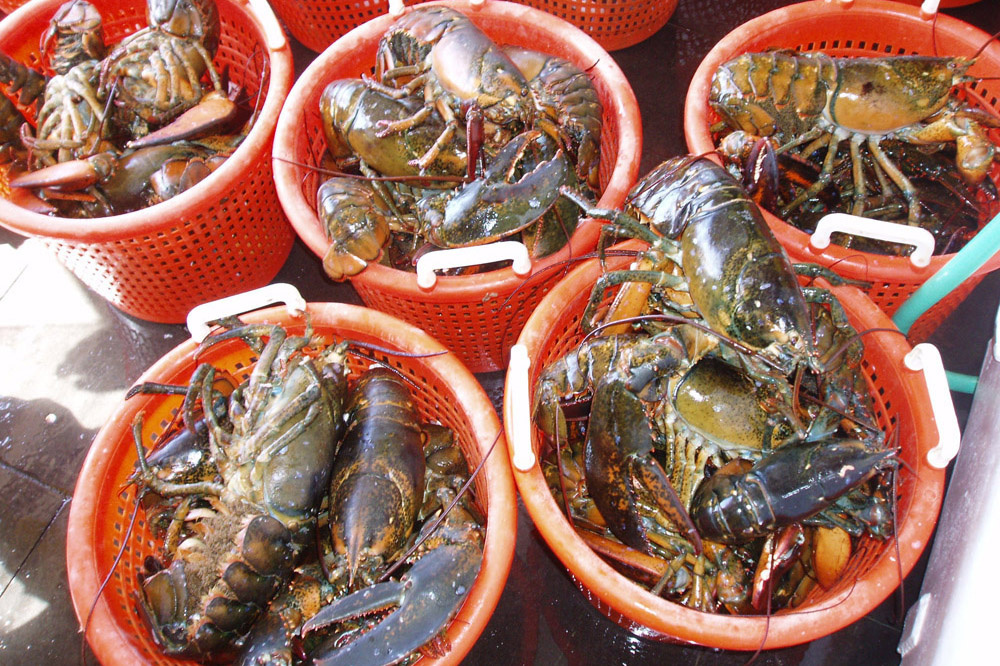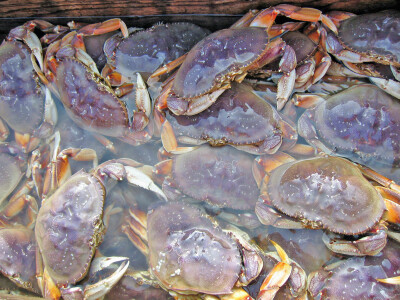East Coast sea scallop stocks will likely follow lobsters in shifting away from rich Mid-Atlantic and southern New England grounds in the coming decades as a consequence of warming ocean waters, according to a new study that projects the impact of climate change on the two richest Atlantic fisheries.
Researchers used species distribution models and a high-resolution global climate model to picture the possible impact of climate change on habitat for lobsters and scallops in the Northeast continental shelf ecosystem, ranging from the New York Bight north to southern New England, Georges Bank and the Gulf of Maine.
The researchers note that the latest benchmark assessment of the lobster stock, cited by the Atlantic States Marine Fisheries Commission in 2015, showed the stock in the southern Mid-Atlantic range was already severely depleted due to several environmental factors including recruitment failure and shell disease related to warmer waters.
“Changes in stock distribution affect where fish and shellfish can be caught and who has access to them over time,” said Vincent Saba, a fishery biologist in the Ecosystems Dynamics and Assessment Branch at NOAA’s Northeast Fisheries Science Center and a co-author of the study, in a prepared statement from the agency describing the findings.
“American lobster and sea scallop are two of the most economically valuable single-species fisheries in the entire United States. They are also important to the economic and cultural well-being of coastal communities in the Northeast. Any changes to their distribution and abundance will have major impacts,” he said.
For NMFS and regional fishery management councils, that means future challenges as stocks shift out of longtime fixed management areas. Those kinds of long-term shifts are already evident for other species as well, like surf clams shifting north and black sea bass now establishing themselves in the southern Gulf of Maine.
Saba and his colleagues used a high-resolution global climate model called CM2.6, developed at the NOAA Geophysical Fluid Dynamics Laboratory in Princeton, N.J., Saba’s location where scientists have done pioneering climate prediction work for decades.
To reduce bias and uncertainty in their model projections, the team both nearshore and offshore fisheries independent trawl survey data to refine the habitat models, with data collected on multiple surveys throughout the Northeast from 1984 to 2016.
The model combined this information with historical temperature and salinity data, then added 80 years of projected bottom temperature and salinity changes in response to a high greenhouse gas emissions scenario – an annual 1 percent increase in atmospheric carbon dioxide.
The results show deep areas in the Gulf of Maine will become increasingly suitable as lobster habitat. To the south, western Long Island Sound and southern New England waters are suitable habitat in the spring – but less in the fall, where warmer water in the last couple of decades has already contributed to a significant lobster decline.
Meanwhile the results show a clear northerly shift in sea scallop distribution, with declining habitat suitability in the Mid-Atlantic, southern New England, and Georges Bank area.
“This study suggests that ocean warming due to climate change will act as a likely stressor to the ecosystem’s southern lobster and sea scallop fisheries and continues to drive further contraction of sea scallop and lobster habitats into the northern areas,” Saba said.
“Our study only looked at ocean temperature and salinity, but other factors such as ocean acidification and changes in predation can also impact these species.”
“Ensemble modelling approaches like the one developed in this study can contribute to lobster and scallop assessments by improving the effectiveness of survey efforts and the precision of stock assessment models,” Saba added. “It also provides a critical step toward establishing long-term adaptive management plans for these two valuable species.”







